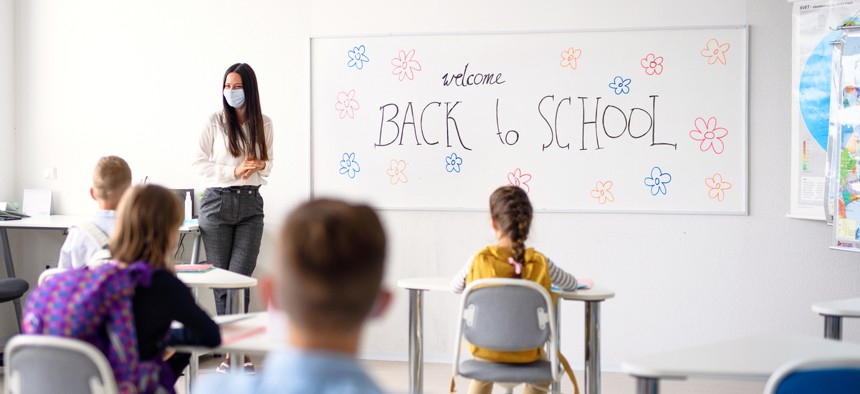With Schools Deemed Low-Risk for Covid, One State Urges a Return to Hybrid Learning

About 60,000 students have participated in some in-person learning in Delaware since the start of the school year. Less than 600 have tested positive for Covid-19. Shutterstock

Connecting state and local government leaders
Delaware Gov. John Carney asked schools to resume at least some in-person instruction by Monday, saying that state health data showed that schools have not been significant sources of infection.
Officials in Delaware are urging schools to return to a blend of virtual and in-person learning by Monday following a four-week “pause” where educators were permitted to shift to entirely remote classes.
“As we have said many times, we do not believe there is a public health reason to close schools,” Gov. John Carney, a Democrat, said in a letter sent Tuesday to parents and school employees. “We have spent the past four weeks helping schools try to address the operational challenges they are experiencing. And we can all agree that students learn best when they’re in school.”
During the break, educators and administrators told state officials that they needed “more transparent and reliable communication about the conditions in their schools” to feel safe returning to in-person instruction.
In response, Carney said, officials reassessed privacy laws and then “dramatically expanded” the school-based Covid-19 data available on the state’s tracking dashboard. Updates include the number of coronavirus cases by school district and the rate of contagious cases in schools each week, defined as students or employees who were in school buildings within 48 hours before testing positive for Covid-19.
Schools in the state have been required to report positive Covid-19 cases to students and their families since the beginning of the school year, but until now the Division of Public Health had only released state-level data. The new dashboard enhances that by drilling down to school districts, but not to individual schools, a level of specificity that officials said is still precluded by privacy laws. The data will be updated weekly, Carney said.
Since the beginning of the school year, roughly 60,000 students in Delaware have participated in some form of in-person learning. The state's data shows that 579 students and 546 teachers have tested positive for Covid-19 in that timeframe. From Dec. 26 to Jan. 1, 16 students and 17 staff members were contagious while at school, according to the dashboard, which notes that “the source of infection of these cases cannot be attributed to schools, nor is it known that they are the source of infection to others in schools.”
Data from state epidemiologists “shows that the vast majority of cases affecting students and staff originated outside of the school building,” Carney said. “The few cases thought to result from in-school spread are frequently observed to be in settings where mask-wearing was not consistently practiced.”
In general, schools have not been found to contribute greatly to community spread of Covid-19. A federal study of schools in Mississippi concluded that lack of consistent mask use and “gatherings with persons outside the household” were the greatest drivers of infection among minors, while “attending school or child care was not associated” with testing positive for the virus.
“In Delaware, our epidemiologists have seen the same thing,” Carney wrote. “It’s a testament to the hard work of students, educators and staff that the number of Covid-positive students and staff is so low.”
Carney’s letter outlined three options for school districts, including a total return to hybrid learning (his preference), keeping high schools remote while shifting elementary and middle schools to a hybrid model, or moving only high-risk students—including kids with special needs, English learners and low-income pupils—to hybrid instruction while keeping everyone else remote.
Those options are only recommendations, meaning final control remains at the local level. In a statement, the head of Delaware’s largest teachers’ union encouraged school leaders to consider the wide-ranging effects of community spread on in-person learning when making those decisions.
“With infection rates increasing we have seen how the rate of teachers needing to quarantine and the lack of substitutes is affecting in-person learning. We do not believe that environment better serves our students than a consistent remote instruction would,” said Stephanie Ingram, president of the Delaware State Education Association.
“We are asking school boards and superintendents to take a hard look at the spread in their communities, carefully consider future operational challenges, and work closely and collaboratively with their local unions before determining if bringing students back into school buildings is the best choice for their district," Ingram added. "If there is doubt, we ask that schools remain in the remote setting for the safety of staff and students.”
Kate Elizabeth Queram is a staff correspondent for Route Fifty and is based in Washington, D.C.

NEXT STORY: Children’s Hospitals Grapple With Wave of Mental Illness




